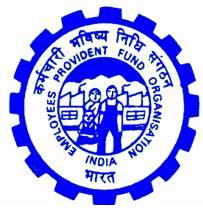It is that time of the year when stock brokerages forecast their Sensex/Nifty targets for the next year. A few such reports have landed up in my mailbox and the highest forecast that I have come across until now is that of the Sensex touching 37,000 points by December 2015.
I was thinking of writing a piece around these forecasts, until I happened to read an interview in which big bull Rakesh Jhunjhunwala said that he would disappointed if the Nifty doesn’t hit 1,25,000 by 2030.
Nifty currently quotes at a level of around 8,500 points. The logic offered by Jhunjhunwla is very straightforward. He said that the earnings of stocks that constitute the Nifty index will grow by fifteen times over the next fifteen years. And that would take the Nifty to a level which is fifteen times its current level ( actually 15 times 8500 is 1,27,500, but given that Jhunjhunwala was talking in very broad terms let’s not nitpick). Hence, Nifty will be at 1,25,000 by 2030.
How reliable is this forecast? Not very, is a straightforward answer. A period of 15 years is too long a time to make such a specific forecast on the stock market or anything else for that matter. There are many things that can go wrong during the period (or go right for that matter). Hence, such forecasts need to be taken with a pinch of salt and seen as something that has an entertainment value more than anything else.
In matters of forecasts like these it is important to remember the first few lines of Ruchir Sharma’s Breakout Nations – In Pursuit of the Next Economic Miracles: “The old rule of forecasting was to make as many forecasts as possible and publicise the ones you got right. The new rule is to forecast so far into the future that no one will know you got it wrong.” Jhunjhunwala has done precisely that.
If earnings have to grow by 15 times in 15 years, the Indian economy also needs to grow at a breakneck speed. Over a very long period of time, the companies cannot keep growing their profits unless the economy grows as well. For 15% earnings growth to happen, the economy needs to grow at a real rate of 8-10% per year (the remaining earnings growth will come from inflation).
The trouble is that this kind of rapid long term economic growth in countries is an extremely rare phenomenon.
As Sharma points out in Breakout Nations:“Very few nations achieve long-term rapid growth. My own research shows that over the course of any given decade since 1950, only one-third of emerging markets have been able to grow at an annual rate of 5% or more. Less than one-fourth have kept that pace up for two decades, and one tenth for three decades. Just six countries (Malaysia, Singapore, South Korea, Taiwan, Thailand, and Hong Kong) have maintained the rate of growth for four decades, and two (South Korea and Taiwan) have done so for five decades.”
In fact, India and China which have been among the fastest growing countries over the last ten years, were laggards when it come to economic growth. “During the 1950s and the 1960s the biggest emerging markets – China and India – were struggling to grow at all. Nations like Iran, Iraq, and Yemen put together long strings of strong growth, but those strings came to a halt with the outbreak of war…In the 1960s, the Philippines, Sri Lanka, and Burma were billed as the next East Asian tigers, only to see their growth falter badly,” writes Sharma.
Long story short: Rapid economic growth cannot be taken for granted and given this forecasts like Nifty touching 1,25,000 at best need to be taken with a pinch of salt. Indeed, Jhunjhunwala had predicted in October 2007 that the Sensex will touch 50,000 points in the next six or seven years.
Its been more than seven years since then and the Sensex is nowhere near the 50,000 level.
In October 2007, India was growing at a rapid rate. At that point of time it was almost a given that the country would continue to grow at a very fast rate. In fact, this feeling lasted almost until 2011, when the high inflation finally caught up with economic growth and the first set of low economic growth numbers started to come.
Also, Jhunjhunwala and most other stock market experts did not know in October 2007 that more or less a year later, the investment bank Lehman Brothers would go bust, and the world would see a financial crisis of the kind it had never seen since the Great Depression.
The stock market fell rapidly in the aftermath of the crisis. Once this happened the central banks of the world led by the Federal Reserve of the United States, printed and pumped money into their respective financial systems.
The idea was to flood the financial system with money so as to maintain low interest rates and hope that people borrow and spend, and in the process get economic growth going again. That happened to a limited extent. What happened instead was that big financial institutions borrowed money at low interest rates and invested it in financial markets all over the world.
In the Indian case the foreign institutional investors have made a net purchase of Rs 3,19,366.35 crore in the Indian stock market between January 2009 and November 2014. During the same period the domestic institutional investors sold stocks worth Rs 1,27,280.1 crore. The massive financial flows from abroad have ensured that the BSE Sensex has jumped from around a level of 10,000 points to around 28,450 points, during the same period, giving an absolute return of around 185%.
The point being that despite this massive inflow of money from abroad, the BSE Sensex is nowhere near the 50,000 level that Jhunjhunwala had predicted in October 2007. Over the long term a lot of things can go wrong and which is what happened after 2007.
To conclude, let me ride on Jhunjhunwala’s forecast and make my own forecast. Jhunjhunwala has predicted that the Nifty index will touch 1,25,000 points in 2030. This means the Sensex will cross 4,16, 420 points in 2030.
How do I say that? The Sensex currently quotes at around 28,450 points. In comparison, the Nifty is at around 8,500 points. This means a Sensex to Nifty ratio of around 3.33.
Hence, when Nifty touches 1,25,000 points, the Sensex will touch 4,16,420 points (1,25,000 x 3.33). For the sake of convenience let’s just round this off to 4,20,000 points. I know, the world is not so linear. If forecasts were just about dragging a few MS Excel cells, everybody would be getting them right.
But then it is the forecast season and everyone seems to be making one, and given that even I should be making one. And if in 2030 I am proven right, I will search this column and tell the world at large that I said it first way back in late 2014 on The Daily Reckoning.
To conclude, dear reader, remember you read it here first. That’s the trick and I know how it works.
The article originally appeared on www.equitymaster.com as a part of The Daily Reckoning, on Dec 4, 2014




